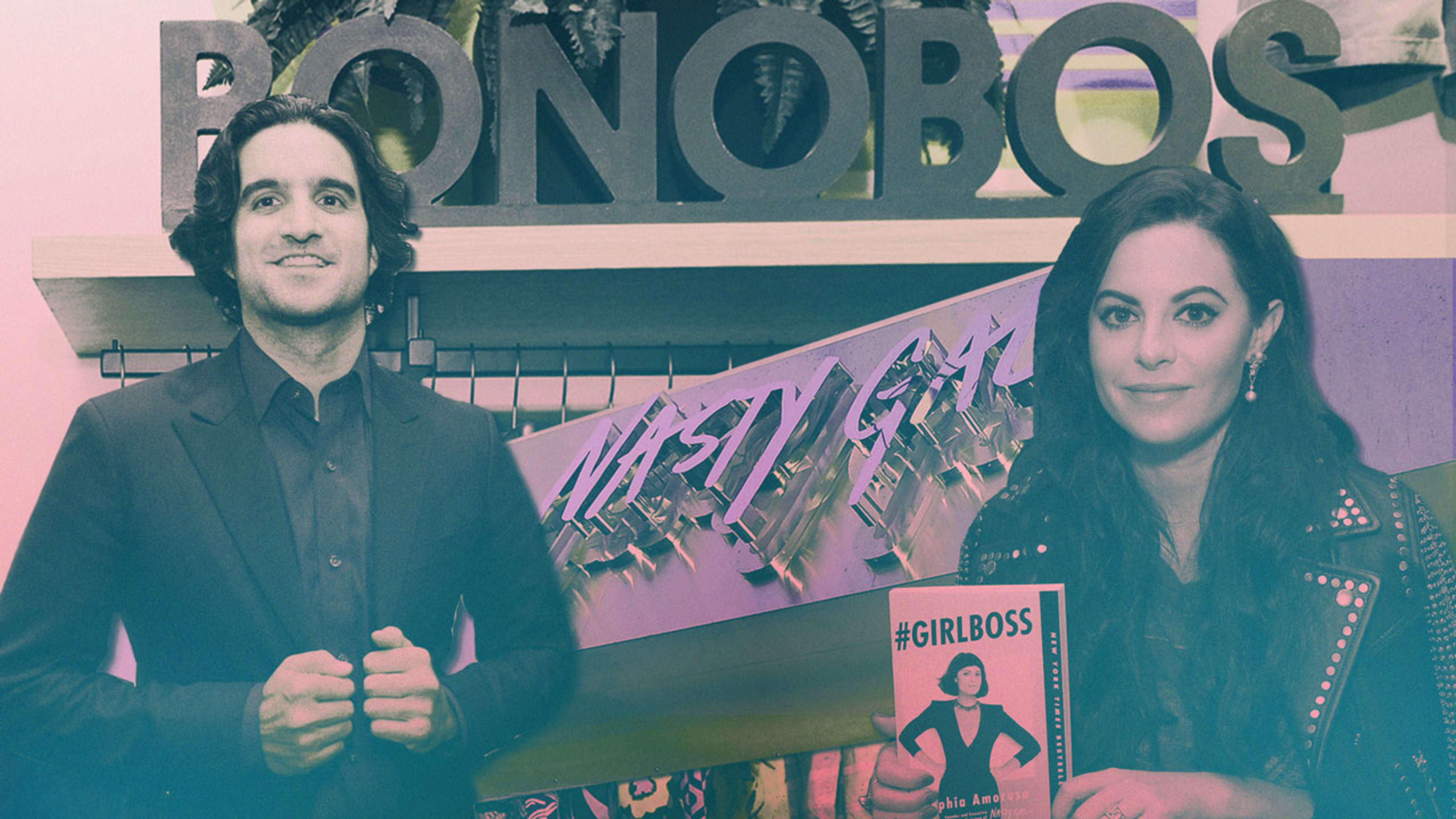Remember when Nasty Gal and Bonobos were the darlings of the e-commerce universe and the envy of fashion startups everywhere? After everything that has happened to them over the last year, those days seem very far away. So allow me to refresh your memory.
Back in 2014, Nasty Gal and Bonobos were on top of the world. Nasty Gal, a vintage eBay shop Sophia Amoruso launched in 2006, had blossomed into an e-commerce powerhouse. It had just expanded into a large office in Los Angeles, staffed by a hundred employees, and was generating $300 million in annual revenues. Bonobos, for its part, gained a loyal following almost immediately after it debuted its derriere-enhancing chinos in 2007. Seven years later, Bonobos was about to sell its millionth pair of pants, making $100 million a year, and readying for a 30 brick-and-mortar store expansion around the country.
Consumers loved these brands, as did the investors who lined up to fund the companies’ growth. Nasty Gal scored $65 million in capital, while Bonobos raked in over $127 million. Each new round of funding was splashed across the business section of newspapers, creating an even brighter halo.
“These companies were raising money at tech valuations, not as apparel business valuations,” says Edward Hertzman, founder and publisher of Sourcing Journal, a trade publication for apparel executives. “This money was poured into consumer acquisition. All they did was acquire, acquire, acquire.”
The success of Bonobos and Nasty Gal prompted a lot of entrepreneurs to try building fashion startups of their own. Andy Dunn, Bonobo’s founder and CEO, literally wrote a manual for them in a blog post about how to build a “digitally native vertical brand” (DNVB). A new flock of fashion brands like Mizzen + Main, Allbirds, Ministry of Supply, and many others–Dunn created a whole encyclopedia of them–followed this approach very closely.
“We watched these brands explode and we wanted to be just like them,” says Sasha Koehn, who cofounded menswear brand Buck Mason in 2014. “But not anymore.”
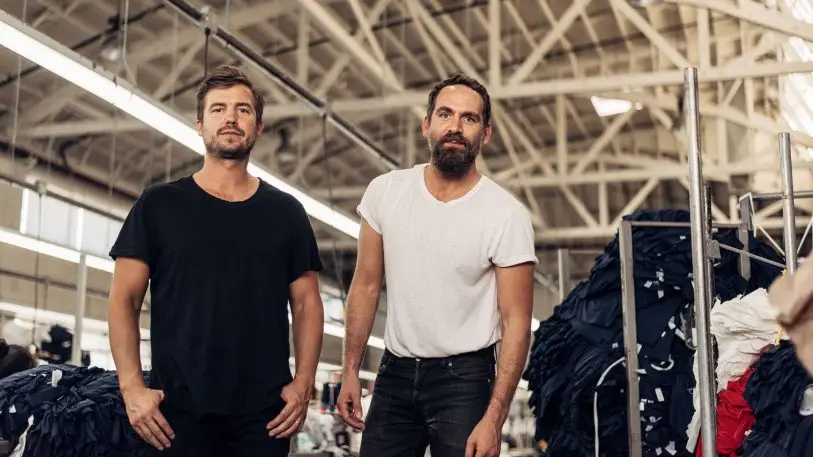
Generation 1.0 Flames Out
As Koehn observed, things went downhill pretty quickly for Bonobos and Nasty Gal. Amoruso described feeling overwhelmed by the investor pressure that came with the funding she had received. “I didn’t love having eight people reporting to me and asking me over and over if we’re hitting targets,” she told Forbes. After several changes in leadership and a slew of employee lawsuits, Nasty Gal filed for bankruptcy in late 2016. In February of this year, her company was acquired by British retailer Boohoo for $40 million, a fraction of what investors had pumped into it.
Meanwhile, Bonobos had troubles of its own. Dunn tried to hire a new CEO, but she quit after just three months because she felt she couldn’t change the company’s culture. Rumors circulated that the company was struggling to reach the sky-high valuations of its investors. In June of this year, Bonobos was acquired by Walmart for $310 million, a move that surprised many because the two companies could not be more different in terms of their brand or customer bases. “This is not my idea of a dream exit,” Koehn says. “We were expecting them to IPO.”
Bonobos and Nasty Gal are not the only online fashion businesses that have struggled over the last few years. Gilt Groupe, also founded in 2007, sold to Hudson’s Bay Company last year for $250 million, which was less than the $268 million taken from investors. The e-commerce player Fab, founded in 2010, landed $310 million in funding, but sold itself in 2015 to PCH International for an undisclosed sum. It was rumored to be as little as $15 million. Both Gilt and Fab were, at one time, valued at $1 billion each.
In each case, the story is the same. The enormous valuations mean that the brands suddenly had to scale very quickly, which generally means no longer serving the needs of the customer originally drawn to the brand, but creating a blander product and brand experience that will appeal to a much wider segment of the market. Company culture often takes a hit, since it’s hard to properly hire and onboard so many new employees. And quality and design frequently begin to erode.
“The reason the brand was a hit was that it had such a distinct point of view,” says Kaitlyn Nagy, who joined Nasty Gal in 2012 as the head of PR and witnessed the company’s unraveling firsthand. (She has since launched her own firm. ) “After outside resources began putting pressure on changing core values, the brand’s DNA began looking and sounding like too many others that were already out there. The authenticity began lacking and the result was that it no longer stood out.”
All of these recent examples are leading fashion e-commerce startups to rethink their growth strategy.
“How much growth is too much growth?” Buck Mason’s other cofounder, Erik Schnakenberg, asks. “We’re seeing that some of the same brands that get celebrated for raising $10M, or hitting $100M in revenue, are gone a few years later or eek out a distressed sale.”
After watching other companies crash and burn, Schnakenberg and Koehn have shifted their approach. Rather than growing fast, their goal is to grow sustainably. They’re ditching the Nasty Gal and Bonobos playbook, and looking to brands like Patagonia and Eileen Fisher as examples. These days, Buck Mason is not focused on pitching VCs all day long, but is focused on becoming profitable and pouring profits back into the company, much like any other small business would do.
“It’s okay if you’re not a unicorn,” Schnakenberg says. “You can still be a really good company, which can put you on the path to eventually become a great one. It takes time, and we’re okay with that.”
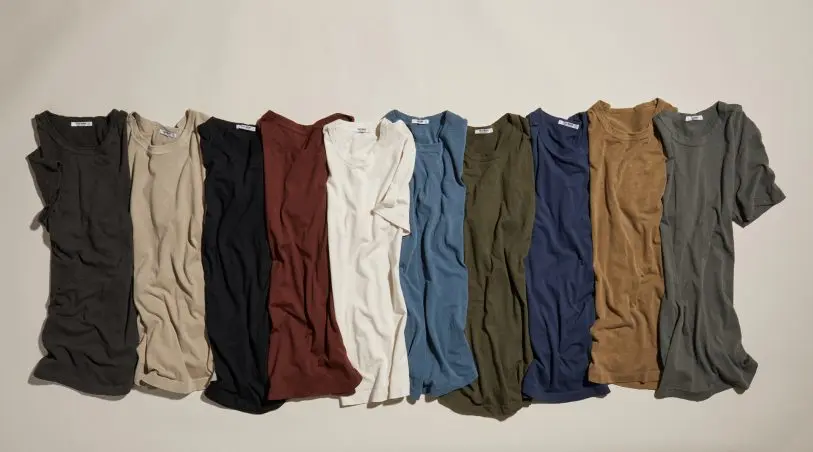
For Generation 2.0, No More Easy Money
This is a relatively recent revelation for Schnakenberg and Koehn. When they first launched Buck Mason four years ago, they had every intention of becoming the next Bonobos.
Much like Bonobos, Schnakenberg and Koehn launched Buck Mason with a single obsessively designed product: a men’s T-shirt. Together, they crafted a tee from the highest-quality cotton they could find, and included little details like a baseball hem and flattering neckline. It was designed to feel polished, but soft like “the worn-out tees you’ve kept since high school,” Schnakenberg says.
Their hard work paid off. Shortly after their website went live, the Wall Street Journal published a glowing review of the T-shirts, calling them the “equivalent of high-thread-count sheets.” Buck Mason’s sales skyrocketed, generating $100,000 in two days. And this momentum only kept building. After a stellar first year, the brand grew 150% a year for three years straight, until they hit $5 million in annual revenue.
In early 2016, Schnakenberg and Koehn realized that to continue their exponential growth, they would need some capital beyond their initial angel round: They were burning through about $100,000 a month. But precisely because of the troubles Bonobos and Nasty Gal were facing, plus the recent flameouts of Gilt Groupe, Fab, and One King’s Lane, VCs were incredibly hard to pitch.
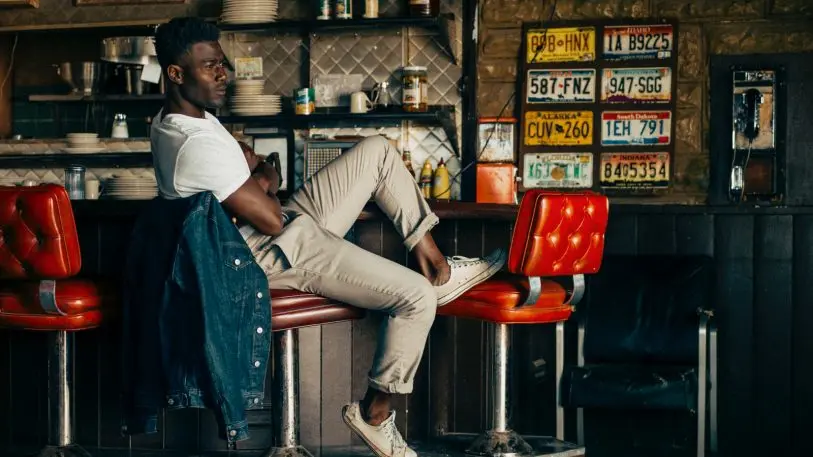
Sourcing Journal‘s Hertzman was seeing similar patterns across the apparel industry. “VC firms are wising up,” he says. “They’re beginning to realize they can’t make money from these apparel businesses. You can’t keep pouring money into this industry forever without seeing a return.”
It was a scary time for Buck Mason’s founders, who were rapidly running out of money. They decided they needed to totally change their strategy. In the end, it was quite simple: They started cutting down on costs, curbed their marketing budget, and became leaner with manufacturing. “At that point we stopped focused on becoming the next billion-dollar brand and started focusing on becoming self-sufficient,” Schnakenberg says. “That first month of profitability was liberating.”
Finn, who has observed Buck Mason’s struggle closely, believes that this outcome was a blessing in disguise.
“Erik and Sasha now have full operational control and options when it comes to their business,” he says. “I’d love to say this was our insight all along, but we just sort of stumbled into this new approach.”
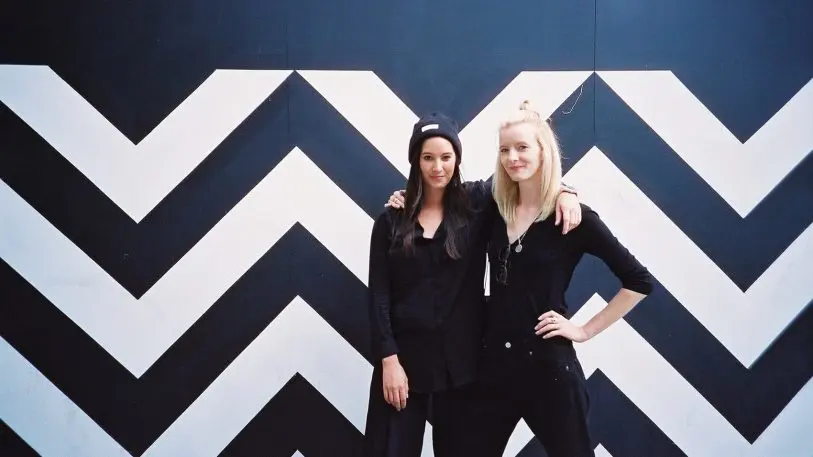
The Vicious Cycle Of Fundraising
Maggie Winter and Jac Cameron, who founded womenswear brand AYR in 2014, learned a great deal from Bonobos’s strategy because they were incubated within Bonobos and closely advised by Dunn himself.
AYR bears all the traits of a digitally native vertical brand designed for the millennial urban consumer. The aesthetic of the clothes is minimalistic, not overly feminine, and designed to be worn all year round (which is what its name stands for). Rather than creating seasonal collections, AYR’s designers spend a lot of time creating each individual item on the website, and a new product drops every week.
“We’re anti-trend,” Winter explains. “We’re not into putting out new collections every six weeks, then marking down the old one.”
And when it comes to business strategy, Winter and Cameron have chosen a very different path than Bonobos. For one thing, they are being much more judicious about their funding goals.

Running a vertically integrated fashion business does require capital because you have to design and manufacture clothes. From the founders’ perspective, it all comes down to balance: You need to take just enough capital to keep growing, but not so much that you stop focusing on design, quality, and the needs of your core customer. In early 2016, AYR received a seed round including investment from Andy Dunn himself. Later that year, it raised another $5.5 million in Series A funding from The Collected Group, a holding company whose brands include Current/Elliott, Equipment, and Joie.
Winter and Cameron aren’t interested in pumping more money into the company right now. Having seen firsthand what happens when you take too much capital, they believe that it is easy to end up in a vicious cycle of dependence on VC firms.
“If you take a really opportunistic valuation, you then have to scale rapidly in order to justify that valuation,” says Winter. “To do that you have to spend all the money you just raised, and then you’re forced to do it all over again. It becomes a cycle, and for a business like ours that focuses on great quality product, it doesn’t make sense. We care more about being profitable.”

Small But Mighty
So what does the future of the fashion industry look like? After everything that has happened, are even more fashion startups going to be less ambitious about growth?
That’s a real possibility. “I think of brands like Chanel,” says AYR’s Winter. “It took decades for it to grow and develop a worldwide following. But a century later, it is still here.”
Hertzman of Sourcing Journal believes that the future of fashion will involve lots of small, niche companies rather than the big conglomerates we’ve seen in the past, like The Gap and Inditex (which owns Zara).
“I see a lot of small players,” Hertzman says. “The aggregate of these little e-commerce sites will be powerful. They may still have small amounts of revenue compared to some of the major players, but when you start adding up these smaller brands, they start eating away at the pie.”

“When they filed, there were shockwaves through the system,” Finn says of Stitch Fix’s IPO. “People were in disbelief. I don’t think even people in the industry understood the true profitability of that business model.”
Finn predicts Stitch Fix’s success will have a ripple effect throughout the fashion industry. For one, it will give scrappy young second-generation startups like Buck Mason and AYR another model for success. Stitch Fix proves that it is possible to grow profitably and on your own terms, without the pressure of external investors.
“Ultimately I think this new way of running a business is much better,” Finn says. “It is going to give leverage back to the entrepreneurs. They’re going to build businesses that feel like lasting propositions rather than just flashes in the pan.”
Recognize your brand’s excellence by applying to this year’s Brands That Matter Awards before the early-rate deadline, May 3.
